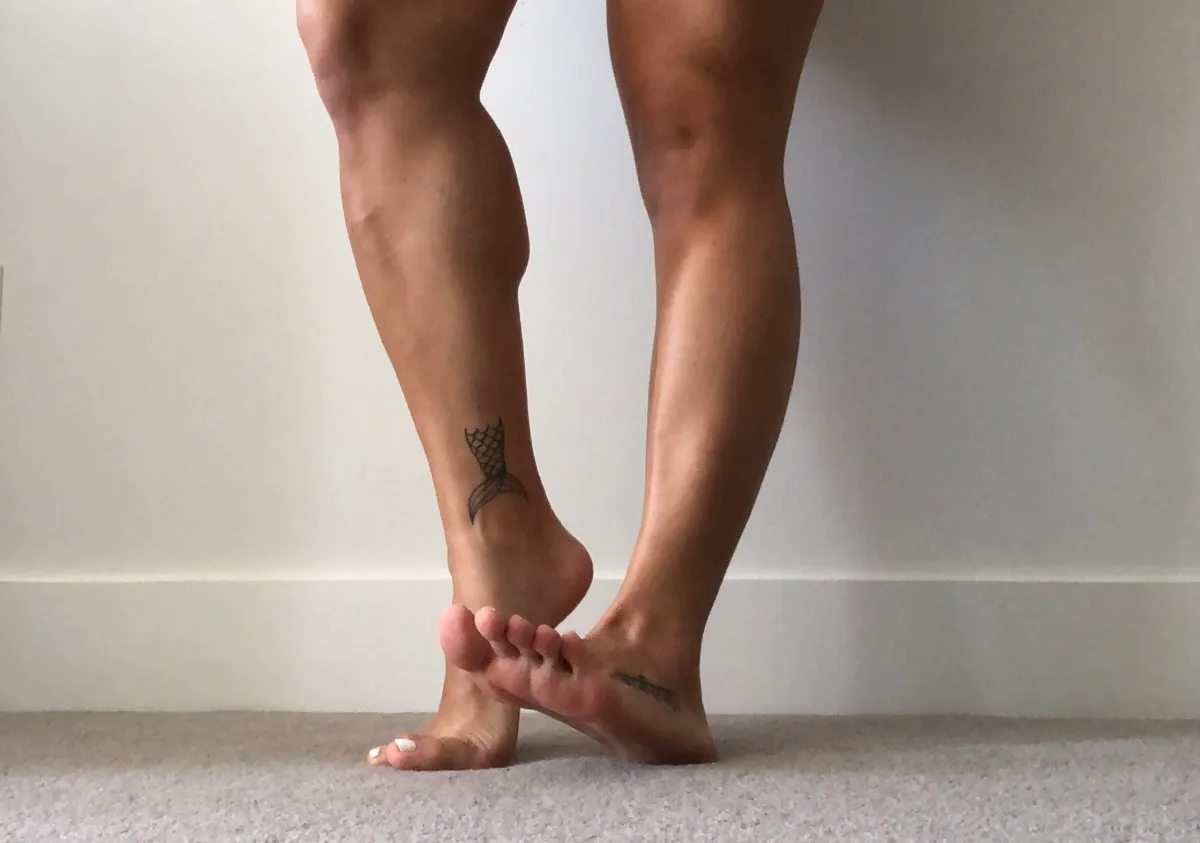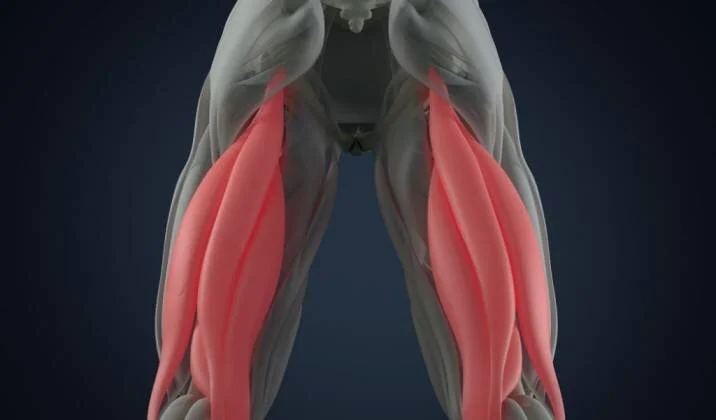Tibialis anterior muscle exercises
Tibialis anterior muscle exercises are a great option to make your lower leg powerful, and flexible to do all your day-to-day activities with ease and improve your performance. This exercise has many health benefits and also reduces the risk of injury.
Table of Contents
Introduction
- The tibialis anterior muscle exercises Help to Reduce the risk of injury to the calf, foot, and ankle joints. Helps to reduce the chance of getting tibialis anterior tendonitis. Helps to increase ground clearance when walking to avoid tripping, Decreases the risk of developing shin splints and stress fractures, Speed up recovery of shin splints and Boost athletic performance in sports where the ankle is “locked” like in soccer to kick a ball
- The tibialis anterior is a muscle of the lower leg in the human body that is used for the movement of the ankle joint. It has its origin on the lateral surface of the tibia, and its insertion on the medial cuneiform and first metatarsal bone. The tibialis anterior muscle is one of the superficial muscles of the sole of the foot and is part of a group of muscles called the anterior compartment of the leg. The tibialis anterior muscle, also called tibialis anticus, is the largest compared to muscles in the anterior compartment of the leg. Its innervated by a branch of the tibial nerve and has a blood supply from branches of the medial and lateral sural arteries, its main functions are to dorsiflexion and inversion of the ankle.
- The tibialis anterior muscle exercise includes two types of exercise
- Tibialis anterior muscle Stretching exercise
- Tibialis anterior muscle Strengthening exercise
Tibialis anterior exercises names
Name of the strengthening exercise
- Tibialis anterior exercises with resistance bands
- Tibialis anterior exercises with weight cuffs
- Isometric Exercise for tibialis anterior
- Seated Toe Raises
- Wall Toe Raises
- Heel Walk
Name of the stretching Exercise
- Seated Calf Stretch
- Kneeling shin stretch
- Lying tibialis anterior stretch
- Toe Drag Stretch
- Ankle ABC’s
Names of the best tibialis anterior exercises
Strengthening exercise list
The best strengthening exercise for the tibialis anterior muscle includes the following exercise
- Tibialis anterior exercises with resistance bands
- Tibialis anterior exercises with weight cuffs
- Isometric Exercise for tibialis anterior
- Seated Toe Raises
- Wall Toe Raises
- Heel Walk
Stretching Exercise list
The best stretching exercise for the tibialis anterior muscle includes the following exercise
- Kneeling shin stretch
- Lying tibialis anterior stretch
- Toe Drag Stretch
- Seated Calf Stretch
Strengthening exercise
Health benefits of tibialis strengthening exercise:
- Helps to decrease the risk of injury to the calf, foot, and ankle joints.
- Helps to decrease the chance of getting tibialis anterior tendonitis.
- Helps to increase ground clearance while walking to avoid tripping
- Helps to reduce the risk of developing shin splints and stress fractures
- Speed up recovery of shin splints.
- Helps to boost athletic performance in sports where the ankle is “locked” like in soccer to kick a ball
Types of exercises to strengthen your tibialis anterior:
Tibialis anterior exercises with resistance bands
- Tibialis anterior strengthening exercise
- For this strengthening exercise, you need an elastic resistance band.
- To perform this exercise you have to Sit on the floor with your leg extended in front of you. now Alternatively
- you can sit on the chair with your foot propped up on another chair.
- Wrap a resistance band over the ankle. Attach one end to a stable object like the leg of a table, and secure the other around your foot near the toes. It can be helpful to have your lower leg resting on a small pillow so the heel of your foot does not rub on the ground.
- To perform this exercise Pull your toes and foot up while keeping your knee joint extended. your ankle should move as you flex up your foot
- Pull your foot up as much as you can, and hold the end position for 2 seconds.
- Slowly relax back to the starting position.
- Do this exercise for 10 to 20 repetitions or until your tibialis anterior muscle tires and you can no longer flex your ankle up.
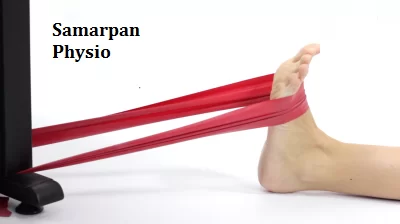
Tibialis anterior exercises with weight cuffs
- For this exercise, you need a weight cuff.
- A weight cuff is a padded weight that you can wrap around your ankle. for this exercise, you have to sit in the chair and wrap a cuff weight around your toes. Make sure it is secure. Let your footrest on the floor, start this exercise by sitting with your weight cuff on your foot and then flexing your ankle so your foot and toes move up towards your knee.
- When your foot is flexed up, hold the position for 2 seconds,
- Slowly lower your toes down to the starting position.
- Repeat this exercise for 10 to 20 repetitions.
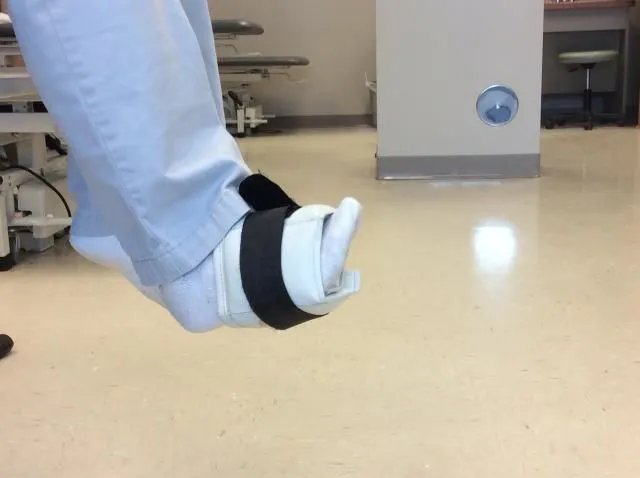
Isometric Exercise for tibialis anterior
- Isometric exercise is the type of motion in which you push against an object you can’t move. It is simple to do, and it can help strengthen your tibialis anterior muscle in specific ranges of motion (ROM) in your ankle.
- To do isometric tibialis anterior strengthening you have to Sit in a chair or lie down.
- Cross one leg over the other leg with your affected leg on the bottom.
- Put your foot on the top of the ankle you wish to exercise.
- Press the top of your weak foot into the sole of the other side foot. Press down with your stronger foot to resist it. Remember, that movement should occur from the foot not from the ankle.
- Hold this position for 5 seconds, and then slowly release it. Perform this exercise about 10 to 15 repetitions of the exercise, 2 or 3 times a day. Isometric exercise can help to strengthen your muscles, but strength only occurs in the specific ranges of motion(ROM) in which you are exercising. That means that you can vary the position of your ankle when performing the exercise.
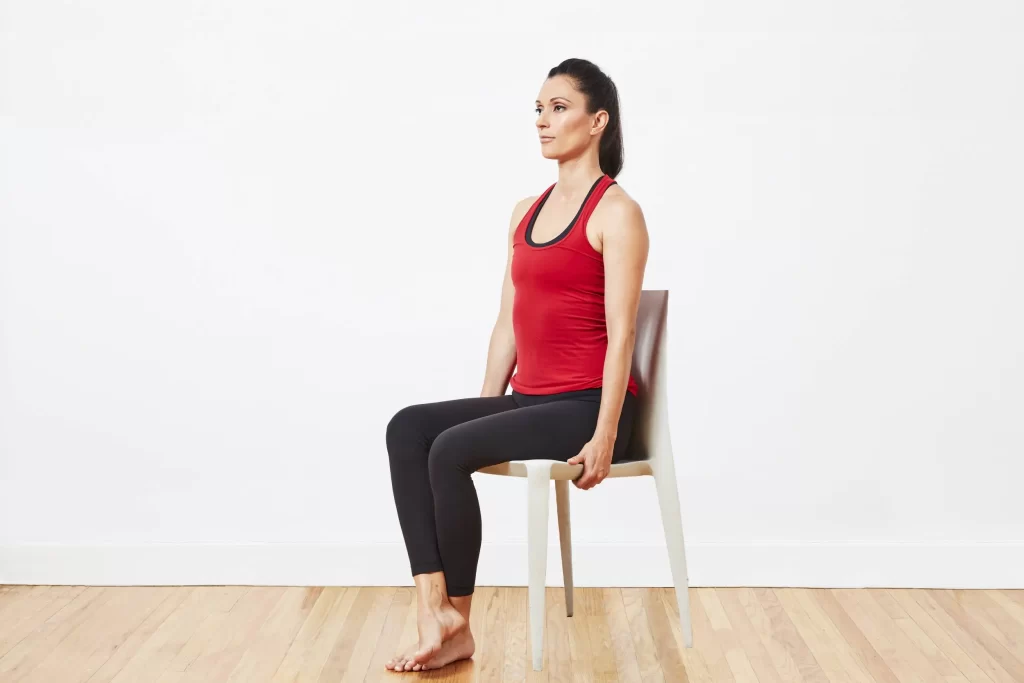
Seated Toe Raises
- For this type of exercise, you have to Sit on a chair with your feet placed in front of you
- Now Slowly raise your toes off of the floor.
- Hold for 2 to 5 seconds at the top
- Repeat for 2 to 3 sets of 20 to 25 repetitions
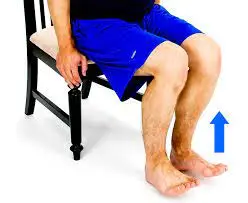
Wall Toe Raises
- For this type of exercise, you have to Stand 12 to 15 inches away with your back toward the wall with your feet hip-width apart.
- Your knees should be flexed slightly then lean back into the wall.
- Elevate your toes off the floor and hold at the top for 2 to 4 seconds then lower your toes back to the floor.
- Repeat for 2 to 3 sets of 15 to 20 repetitions
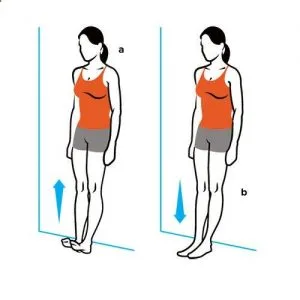
Heel Walk
- For this type of exercise, you have to stand on both feet hip-width apart with no shoes on.
- Elevate your toes off the ground so that your heels are in contact with the ground.
- Walk forward while leaning back placing your weight on the heels.
- Do this for 30 to 40 seconds.
- Repeat this 2 to 3 times.
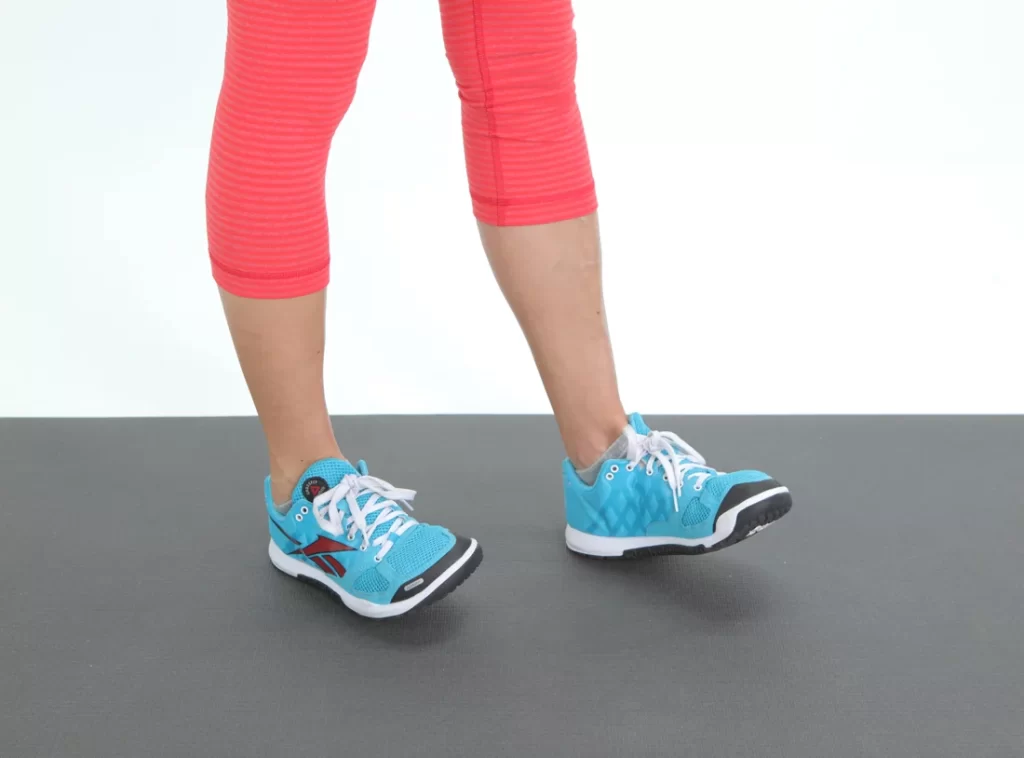
Stretching exercise
What are the health benefits of tibialis anterior muscle stretching?
There are many benefits of tibialis anterior muscle stretching
- Decreased risk of injury to calves, ankles as well as feet.
- Reduced chance of getting tibialis anterior tendonitis.
- Better clearance of the ground while walking to avoid tripping
- Reduced the risk of developing shin splints as well as stress fractures
- Fast-up recovery of shin splints.
- Improved athletic performance in sports where the ankle is “locked” such as in soccer to kick a ball
- Improves an ankle’s joint range of motion. Such as dorsiflexion, inversion, and also adduction.
- This also maintains the medial arch of the foot.
- This also assists in the anticipatory postural adjustment (APA) part while the gait beginning tibialis anterior muscle performs the knee flexion at the stance limb by causing forward displacement of a tibia.
- This also helps in eccentric deceleration of foot plantar flexion, pronation, and eversion movements.
Seated Calf Stretch
- If your tibialis anterior muscle is weak, then you have difficulty flexing your foot. This means you have a shortened calf. A shorted calf will be a tight muscle, so stretching the calf may be necessary to fully correct your foot drop.
- To perform this exercise you have to Wrap a towel around the ball of your foot, and your knee must be extended.
- Pull the ends of the towel so your foot flexes up and stretches your calf muscle.
- You can hold this stretch for 15 to 30 seconds.
- Relax. Perform this 3 times.
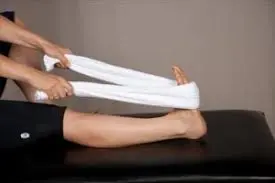
Kneeling shin stretch
- The kneeling shin stretch is also called the kneeling tibialis anterior stretch because of its effect on the muscle. This exercise targets the tibialis anterior muscle while stretching your quads and ankle muscles.
- The kneeling shin stretch is a low-intensity exercise that offsets the tightness in your tibialis anterior muscle.
- This tibialis anterior muscle tightness might be due to the muscle being undertrained, an injury, or even habits like spending too much time wearing heels. The exercise does not require any equipment and can be done in the comfort of your home or the gym.
To perform the kneeling shin stretch:
- Get into a kneeling position.
- Keep your feet hip-width apart, and your toes turned inward slightly.
- Keep your back straight, and shoulder blades pinched together slightly.
- Keep your neck neutral.
- Sit back on the heels of your feet.
- Hold this position for approx 30 seconds.
- Rest and repeat.
- If you want to increase the intensity of the exercise, lean back slightly and try to raise your knees off the ground as you do that.
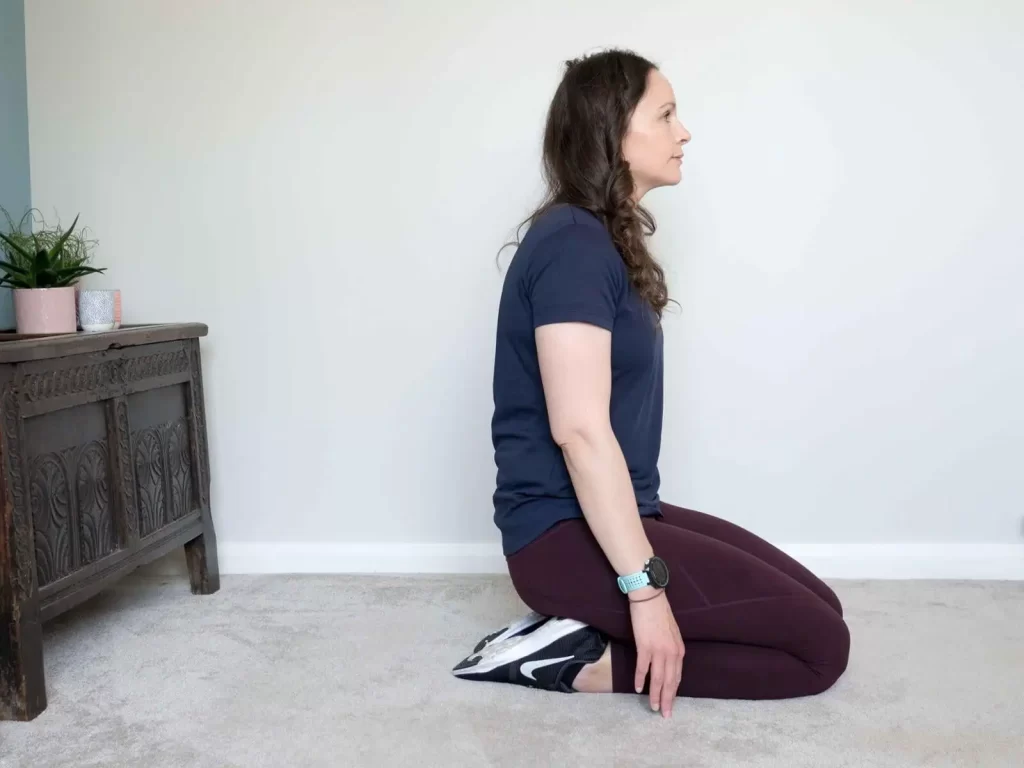
Lying tibialis anterior stretch
The lying tibialis anterior stretch looks somewhat like a quadriceps muscle stretch. It is very easy to perform and highly convenient.
To do the lying tibialis anterior stretch:
- Lay on the left side of yours with your legs extended.
- Support your head on the palm of your left hand and prop your left elbow on the floor.
- Fold your right knee, so your right foot is behind you.
- Using your right hand, grab your right foot around the toes.
- Gently pull your right foot further behind you.
- Hold this position for approx 20 seconds. This is one repetition.
- Repeat on your right leg.
- Complete as many repetitions as you can.

Toe Drag Stretch
- This shin stretch is a good starting point, and if you have any kind of weakness or soreness in the muscle, you want to do some stretching before you add more strain.
- Stand up straight and stretch one leg out behind and stretch your foot out as far as possible for you.
- The tip of your toe should be the furthest point away from your body and touching the floor.
- Now, slowly pull your leg forward and bend your knee slightly. But you should still keep some downward pressure on the toe.
- The effect will be a stretching sensation in the shin muscles, and the more pressure you apply, the more you will feel the stretch.

Ankle ABC’s
- Moving an ankle in multiple directions is one way to slowly stretch the tibialis anterior muscle.
- Take a comfortable sitting position with the feet unsupported. Remove the shoes as well as the socks also.
- Draw the alphabet in the air Gently, leading with the big toe. Draw as far as possible in every direction. don’t allow the knee to move, all movement should come from the ankle.
- Every time the foot is pointed downward, you should feel the pulling sensation in the front of the shin.
- Repeat the alphabet 2 to 3 times on both legs.
When do you have to avoid Tibialis anterior strengthening exercise?
- If you feel any pain during this exercise then do not do this exercise.
- If you are already suffering from pain in your foot and ankle.
- If your doctor advises you to rest.
- If your bones in the lower limb are recently fractured.
What are the safety and precautions of doing tibialis anterior stretching exercise?
There are some safety measures you need to follow:
- Don’t bounce during the tibialis anterior stretch. it causes injuries to your muscles. Such as strain.
- Never overstretch a tibialis anterior muscle.
- Don’t perform so many times, it can cause fatigue to your muscle. You should use a suggested time of repetition.
- The holding time of your stretch should be recommended by your therapist which is normally 30-60 seconds.
- do not perform a stretch on the prior injured part of your body. Such as fractures, sprains, etc.
- Never stretch cold muscles, it causes pain. stretch it after you warm up your muscle.
Tibialis anterior exercises at home
You can do a different type of tibialis anterior muscle exercise at home
- Isometric Exercise for Foot Drop
- Seated Toe Raises
- Wall Toe Raises
- Heel Walk
- Seated Calf Stretch
- Kneeling shin stretch
- Lying tibialis anterior stretch
- Toe Drag Stretch
Tibialis anterior exercises bodybuilding
The tibialis anterior is the muscle located in the front of your lower leg and is often neglected in lower-leg training. True, this exercise does not specifically build the calves muscle, but training the tibialis anterior muscle is necessary for balancing out mass in the lower leg and improving athletic performance.
FAQ
Different types of exercise work the tibialis anterior muscle like Seated Elastic Band Exercise for Foot Drop, Cuff Weight Exercise for Foot Drop, Isometric Exercise for Foot Drop, Seated Toe Raises, Wall Toe Raises, Heel Walk, Seated Calf Stretch, Kneeling shin stretch, lying tibialis anterior stretch and Toe Drag Stretch.
If you are looking for exercise to help protect and strengthen your knees, tibialis raises are a very good option. They strengthen the muscles around your knee joint and can also improve balance and coordination. Be sure to warm up before with some stretching and start slow.
Isometric exercise is a type of motion in which you push against an object you can not move. It is simple to do, and it can help strengthen your anterior tibialis muscle in specific ranges of motion (ROM) in your ankle. To do isometric anterior tibialis strengthening you have to Sit in a chair or lie down. Cross one leg over the other with your affected leg on the bottom. Put your foot on top of the ankle you wish to exercise.
Press the top of your weak foot into the sole of your other foot. Press down with the stronger foot to resist it. Remember, that movement occurs from the foot not from the ankle. Hold this position for five seconds, and then slowly release. Perform about 10 to 15 repetitions of the exercise, 2 or 3 times a day. Isometric exercise can help to strengthen your muscles, but strength only occurs in the specific ROM in which you are exercising. That means that you should vary the position of your ankle when performing the exercise.
The tibialis anterior muscle is the strongest dorsiflexor of the foot. Dorsiflexion is critical to gait because this movement clears the foot off the floor during the swing phase. The tibialis anterior, along with the tibialis posterior muscle is also a primary inverter of the foot.

